Dear brethren, today I would like to kraft with you a piece of knowledge about an interesting ancient philosophical way of thinking and how those ancient sparks of wisdom could fit into our Freemasonry practice and our modern-day lives.
First, I would like to introduce the author, Zeno of Citium, Zeno was an ancient Greek philosopher born around 334 BCE in Citium, Cyprus.
He is best known as the founder of Stoicism, a philosophical school that became one of the most influential in the Hellenistic and Roman periods.
He belonged to a prosperous merchant family and was likely well-educated in various subjects, including philosophy.
However, Zeno’s life took a significant turn when he suffered a shipwreck, resulting in the loss of his cargo and personal belongings.
Following this event, he moved to Athens, where he began to study philosophy under various teachers, including Crates of Thebes, a Cynic philosopher.
Zeno’s philosophical journey eventually led him to develop his school of thought, which came to be known as Stoicism.
He began teaching in the Stoa Poikile or Painted Stoa, a public colonnade in Athens, which gave the Stoic school its name.
Zeno’s teachings attracted many followers, and his school became one of the most influential philosophical movements in the Hellenistic world.
Zeno’s lifestyle as a philosopher was characterized by simplicity, self-discipline, and devotion to his philosophical principles.
His teachings emphasized living in accordance with nature, cultivating virtue, and achieving inner peace through self-control and rationality.
He taught in Athens, where he attracted many followers, and his ideas laid the foundation for Stoic philosophy as it developed through later figures such as Cleanthes, Chrysippus, Epictetus, Seneca, and Marcus Aurelius.
The bases of Stoicism are rooted in several fundamental principles and teachings:
Nature: Stoics believed in living in accordance with nature, which they saw as rational and orderly. This involves accepting the natural order of the universe and recognizing one’s place within it.
Virtue: Virtue, particularly wisdom, courage, justice, and temperance, is central to Stoic ethics. Stoics believed that cultivating virtuous character traits leads to a eudaimonic life—a life of flourishing and fulfilment.
Control: emphasises focusing on what is within one’s control and accepting what is not. This involves distinguishing between things we can change (our thoughts, actions, and attitudes) and things we cannot (external events, other people’s actions).
Acceptance: This teaches acceptance of external events, recognizing that while we cannot control what happens to us, we can control our responses and attitudes toward those events. This leads to greater resilience and inner peace.
Endurance and Resilience: Stoicism advocates for enduring hardship with courage and resilience, viewing challenges as opportunities for growth and learning rather than as obstacles to happiness.
Mindfulness and Attention: Stoics practised mindfulness and self-awareness, striving to live in the present moment and to pay attention to their thoughts, judgments, and impulses. This helps in maintaining control over one’s reactions and emotions.
Indifference to External Goods: Stoics believed in valuing inner virtues over external goods such as wealth, fame, or social status. While not rejecting these externals entirely, the Stoics advocated for a mindset of indifference towards them, recognizing that they do not guarantee happiness or fulfilment.
These principles form the foundation of Stoic philosophy and provide a framework for living a life of wisdom, virtue, and inner peace amidst the challenges of the world. Some quotes that are popular in our days that come from stoic school are “Memento mori” and “Premeditatio malorum”.
“Memento Mori” is a Latin phrase that translates to “Remember that you must die.” It serves as a reminder of the inevitability of death and the transient nature of life.
In Stoic philosophy, “Memento Mori” encourages individuals to reflect on their mortality, appreciate the present moment, and live a virtuous life in preparation for death.
It serves as a call to prioritize what truly matters and to make the most of the time we have.
In Freemasonry, the interpretation of “Memento Mori” aligns with its emphasis on morality, spirituality, and the pursuit of enlightenment. While Freemasonry does not have a singular interpretation of the phrase, “Memento Mori” is often understood within the context of its symbolic teachings and rituals.
This quote can serve as a reminder of the impermanence of life and the importance of preparing for one’s eventual death.
It encourages Freemasons to reflect on their mortality, to live virtuously, and to make the most of their time on Earth.
It also reinforces the Masonic emphasis on the importance of moral and spiritual self-improvement, as Freemasons strive to cultivate inner virtues and lead meaningful lives in service to others.
Moreover, “Memento Mori” can be interpreted as a reminder of the Masonic teachings about the immortality of the soul and the belief in a higher spiritual reality beyond physical existence.
Freemasonry teaches its members to contemplate the nature of life, death, and the afterlife, with the understanding that death is not the end but a transition to a higher plane of existence.
Overall, “Memento Mori” in Freemasonry serves as a philosophical and spiritual reminder of the transient nature of life, the importance of moral conduct, and the pursuit of spiritual enlightenment.
It encourages Freemasons to live with purpose, integrity, and a commitment to personal and moral growth.
On the other hand, the phrase “premeditatio malorum” is a Latin term that translates to “premeditation of evils” or “anticipation of adversity.”
It is a concept often associated with Stoic philosophy as we recently observed, but the author of this quote was not Zeto itself but the philosopher Seneca.
Seneca wrote about the practice of premeditatio malorum as a Stoic exercise aimed at mental preparation for adversity.
By envisioning and mentally rehearsing potential challenges or hardships, individuals could better equip themselves to face and overcome adversity when it inevitably arises.
Overall, while premeditatio malorum is not explicitly mentioned in Freemasonry philosophy, its underlying principles of moral preparedness, inner strength, acceptance of adversity, and self-improvement can align with and complement the teachings and values of Freemasonry.
As we well know, during 333 BCE, philosophical thinking was diverse and vibrant, with several prominent schools of thought emerging in ancient Greece so, I would like to go through some of the most prominent schools of that age and compare them with the Stoic school.
Some of the key philosophical movements and figures during this time included Plato’s Academy (427–347 BCE) which was flourishing, and his dialogues were influential in shaping philosophical discourse. Plato’s ideas on metaphysics, epistemology, ethics, and politics laid the groundwork for Western philosophy.
Stoicism and Plato’s philosophy share some similarities but also have significant differences. For example, both Stoicism and Plato’s philosophy place a strong emphasis on ethics and the pursuit of a virtuous life.
They both believe in the importance of cultivating virtues such as wisdom, courage, justice, and temperance as essential to living a good life. In this same idea, Stoicism and Plato’s philosophy exhibit elements of idealism, though in different ways.
Plato’s philosophy posits the existence of ideal Forms or Ideas, which represent the ultimate reality beyond the physical world.
Stoicism, while not explicitly idealist in the Platonic sense, emphasizes the importance of living by the rational and orderly nature of the universe, which can be seen as a kind of cosmic ideal. Also, both philosophies value intellectual pursuit and the cultivation of wisdom.
They both advocate for the use of reason and rationality in guiding human conduct and understanding the nature of reality.
However, there are also some key differences between these two schools. Plato’s philosophy is characterized by a strong emphasis on the pursuit of knowledge and truth, often through dialectic and the contemplation of Forms.
Stoicism, while valuing reason and rationality, takes a more pragmatic approach to knowledge, focusing on the cultivation of virtue and inner peace rather than the pursuit of abstract truths.
On the other hand, while both Stoicism and Plato’s philosophy prioritize virtue, they differ in their understanding of what constitutes virtue.
Plato’s philosophy tends to emphasize the pursuit of wisdom and the transcendence of worldly desires in favour of intellectual and moral excellence.
Stoicism, however, places greater emphasis on practical virtues such as courage, self-control, and resilience in the face of adversity.
Also, Plato’s philosophy does not explicitly address emotions in the same way that Stoicism does.
However, Plato’s dialogues often depict the importance of achieving harmony and balance in the soul, which can be seen as a precursor to Stoic ideas about emotional control and inner peace.
To summarize, while Stoicism and Plato’s philosophy share some common principles such as the emphasis on ethics and intellectual pursuit, they differ in their epistemological stance, view of virtue, and attitude towards emotions.
Plato’s philosophy tends to prioritize the pursuit of abstract truths and intellectual excellence, while Stoicism focuses more on practical wisdom and living in accordance with nature.
Another prominent philosopher of Zeno’s era was Aristotle (384–322 BCE), a student of Plato, who founded his school, the Lyceum.
His works covered a wide range of topics, including logic, metaphysics, ethics, politics, and natural sciences. Aristotle’s systematic approach to knowledge greatly influenced the modern way of thinking.
The Stoicism and Aristotelian philosophy share some similarities but also have significant differences, so let’s dive briefly into them.
The Stoicism and Aristotelian philosophy place a strong emphasis on ethics and the pursuit of a virtuous life. Both schools advocate for the cultivation of virtues such as courage, wisdom, justice, and temperance as essential to achieving eudaimonia (flourishing or happiness).
Also, both philosophies have a teleological view of human life, meaning they believe that human beings have a purpose or end goal to strive towards.
For Aristotle, this end goal is eudaimonia, which is achieved through the cultivation of virtue and the exercise of reason.
Stoics also see eudaimonia as the ultimate goal of life, attained through living in accordance with nature and cultivating virtue and emphasize the importance of reason and rationality in guiding human conduct.
They both believe that human beings have the capacity to reason and that rationality should be employed in the pursuit of virtue and happiness.
On the other hand, while both Stoicism and Aristotelian philosophy value virtue as essential to a good life, they differ in their understanding of what constitutes virtue.
Stoicism tends to prioritize certain virtues such as wisdom, courage, and self-control above others, whereas Aristotelian philosophy takes a more holistic approach, viewing virtue as a mean between extremes (the doctrine of the golden mean).
Also, while both schools aim for eudaimonia, they have different views on the nature of happiness. For Aristotle, eudaimonia is achieved through the cultivation of virtue and the exercise of reason by one’s natural capacities.
Stoics, on the other hand, see eudaimonia as a state of inner peace and tranquillity achieved through living in harmony with nature and accepting the natural order of the universe.
Stoicism advocates for the suppression of negative emotions such as fear and desire, while Aristotelian philosophy takes a more nuanced approach, recognizing that emotions can be either virtuous or vicious depending on whether they are by reason and the virtues.
In short words, while Stoicism and Aristotelian philosophy share some common principles such as the emphasis on ethics, reason, and the pursuit of eudaimonia, they differ in their understanding of virtue, happiness, and the role of emotions in human life.
Cynic philosophy, represented by no celebrity figures like Diogenes of Sinope, sure you will remember him by his famous interaction with Alexander the Great.
Diogenes emphasized living a simple life in accordance with nature, rejecting social conventions, and pursuing virtue and self-sufficiency.
While you could think that Stoicism and the Cynic schools differ a lot, there are some similarities.
Both Stoicism and Cynicism prioritize the cultivation of virtue as essential to living a good life. Virtues such as wisdom, courage, justice, and temperance are central to both philosophies. Also, both schools advocate for simplicity and self-sufficiency in living.
Stoics and Cynics alike believe that freedom from material possessions and social conventions leads to greater inner peace and fulfilment and emphasizes the importance of inner strength and resilience in the face of external events.
They encourage individuals to focus on what is within their control and to maintain a sense of equanimity and detachment from external circumstances.
I’m sure you spotted some major differences between these two schools, and the most evident could be that Stoicism generally maintains a more positive attitude towards society and social roles.
Stoics believe in fulfilling one’s duties and obligations as a member of society, whereas Cynics often reject social norms and conventions altogether, living in intentional opposition to societal expectations.
But also, Stoicism encourages the cultivation of positive emotions such as courage and gratitude while advocating for the suppression of negative emotions like fear and desire.
Cynicism, on the other hand, often promotes a more extreme rejection of conventional emotions and societal norms, advocating for emotional detachment and indifference to both pleasure and pain.
In their way of view of nature, the Stoics believe in living in harmony with nature and accepting the natural order of the universe.
Cynicism, while also valuing simplicity and self-sufficiency, tends to have a more confrontational and critical attitude towards societal norms and human conventions, often advocating for a return to a more primitive or “natural” way of life.
Long story short, while Stoicism and Cynicism share some common principles such as the importance of virtue and simplicity of life, they differ in their attitudes towards society, emotions, and the natural order, with Stoicism generally maintaining a more moderate and integrated approach, while Cynicism tends towards a more radical rejection of societal norms and conventions.
Two more schools are “famous” from Zeno’s age, the Epicureanism and the Pyrrhonism. Founded by Epicurus (341–270 BCE), Epicureanism taught that the highest good is pleasure, understood as tranquillity and the absence of pain.
Epicurus emphasized the pursuit of pleasure through moderation, friendship, and the cultivation of knowledge.
These two ancient philosophical schools share some similarities but also have significant differences, to start with the similarities, both Stoicism and Epicureanism are ethical philosophies concerned with how to live a good life.
While they have different views on what constitutes a good life, both emphasize the importance of ethics in guiding human behaviour.
Despite their differences, both schools reject pure hedonism (the pursuit of pleasure as the ultimate goal of life).
Stoics argue that virtue and inner peace are more important than pleasure, while Epicureans believe that a life of tranquillity and absence of pain leads to the highest pleasure.
In the same line, both philosophies value inner peace and tranquillity. Stoics seek tranquillity through acceptance of the natural order and control over one’s emotions, while Epicureans pursue it by avoiding pain and disturbance, cultivating friendship, and living modestly.
However, there are some major differences between the two schools, Stoicism views pleasure as indifferent and not essential to a good life, while Epicureanism sees pleasure, specifically the absence of pain (ataraxia) and tranquillity (aponia), as the highest good. Epicureans believe that pursuing pleasure in moderation leads to a eudaimonic life.
Also, Stoics teaches an indifference toward external goods such as wealth, fame, and social status, arguing that virtue is the only true good. In contrast, Epicureanism acknowledges the importance of external goods in providing pleasure and tranquillity but advocates for their pursuit in moderation and without attachment.
An important difference between both is their way of seeing the Virtue, Stoicism places a strong emphasis on virtue as the highest good and believes that living in accordance with virtue leads to eudaimonia (flourishing).
While Epicureanism also values virtue, they see it as instrumental to achieving pleasure and tranquillity rather than as an end in itself.
Also, Stoicism advocates for living in accordance with nature and accepting the natural order, while Epicureanism prioritizes the pursuit of pleasure and avoidance of pain as the guiding principles of life.
In summary, while Stoicism and Epicureanism share a focus on ethics and inner peace, they diverge in their views on pleasure, the importance of external goods, the role of virtue, and the guiding principles of life.
The last school from Zeno’s ages that I’m going to compare today with the Stoic school is Pyrrhonism, founded by Pyrrho of Elis (c. 360–270 BCE), a sceptical school of thought that advocated suspension of judgment in all matters. Pyrrhonists believed in attaining tranquillity by withholding assent to any belief or opinion.
Stoicism and Pyrrhonism are two distinct philosophical schools with both similarities and differences. Let’s spot the similarities first, as we were doing before. Both Stoicism and Pyrrhonism place a strong emphasis on ethics and the pursuit of a virtuous life.
Both schools advocate for living by certain principles, though the specific virtues and practices may differ. In the same way, they aim for inner tranquillity or peace of mind.
Stoics seek this through acceptance of the natural order and control over one’s responses, while Pyrrhonists pursue tranquillity through suspension of judgment and freedom from mental disturbance.
Also, both schools advocate for accepting external events, albeit for different reasons. Stoicism teaches acceptance as a means to maintain inner peace and focus on what is within one’s control, while Pyrrhonism advocates for suspension of judgment about external events to achieve mental equanimity.
One of the first differences we can spot between both schools is that Stoicism asserts certain beliefs as true, such as the existence of virtue and the rationality of the universe, while Pyrrhonism, on the other hand, is a sceptical philosophy that suspends judgment about all beliefs, including those about virtue and the nature of reality.
They also may differ from the Stoics assert that knowledge and understanding of virtue and the natural order are achievable goals meanwhile Pyrrhonism doubts the possibility of attaining certain knowledge and advocates for perpetual inquiry and suspension of judgment.
Also, Stoicism advocates for the cultivation of positive emotions such as courage, wisdom, and justice, while encouraging the suppression of negative emotions like fear and desire.
Pyrrhonism, being sceptical of all beliefs, takes a more neutral stance towards emotions, neither advocating for their suppression nor their cultivation.
In summary, while Stoicism and Pyrrhonism share some common goals, such as the pursuit of virtue and inner tranquillity, they differ in their epistemological stance, approach to knowledge, and attitude towards emotions and beliefs.
Stoicism asserts certain truths and advocates for control over one’s reactions, while Pyrrhonism embraces scepticism and suspends judgment about all beliefs.
Now, what about the Stoicism and Freemasonry? the relationship between Stoicism and Freemasonry philosophy is complex and multifaceted.
While Freemasonry does not explicitly align itself with any particular philosophical system, including Stoicism, some notable connections and influences can be observed. Freemasonry incorporates elements of various philosophical traditions; including the Stoicism.
Stoic principles such as the pursuit of virtue, self-discipline, and the cultivation of inner peace resonate with the moral and ethical teachings found within Freemasonry.
Both Stoicism and Freemasonry emphasize the importance of ethical conduct and moral virtue. Freemasonry teaches its members to uphold principles of brotherly love, relief, and truth, which align with Stoic ideals of justice, compassion, and integrity.
The practices, such as mindfulness, self-examination, and the development of resilience, can be seen as complementary to the rituals and ceremonies of Freemasonry. Both systems provide tools and frameworks for personal growth and self-improvement.
Freemasonry emerged during the Enlightenment period, a time when Stoic ideas experienced a revival and influenced various aspects of Western thought.
While Freemasonry draws on a diverse range of philosophical and religious traditions, Stoicism likely contributed to the intellectual milieu of the time and may have influenced the development of Masonic principles.
While some Masons may resonate with Stoic teachings and incorporate them into their Masonic practice, others may draw from different philosophical traditions or spiritual beliefs.
I would not end my dissertation without trying to give a practical approach to the knowledge we scratched in the past lines.
We live in a time with a stressful and challenging daily life, between work, international events such as wars, pandemics, social competition, big economic changes and new “philosophical” schools, or ways of thinking that may challenge your path daily, so, how does Stoicism could influence our modern way of life?
Stoicism can influence modern life in several ways. First, is the development of Resilience in Adversity, Stoicism teaches individuals to accept and adapt to adversity, focusing on what is within their control and maintaining inner peace amidst challenges.
In modern life, this mindset can help people navigate setbacks, stress, and uncertainty with greater resilience and emotional stability.
The Focus on Virtue, as we learned, Stoicism emphasizes the importance of cultivating virtue and moral character. In today’s world, this can translate into making ethical decisions, acting with integrity, and prioritizing values such as honesty, kindness, and compassion in personal and professional life.
Practices such as mindfulness and self-awareness can help individuals cultivate a greater sense of presence and purpose in their daily lives.
By paying attention to their thoughts, emotions, and actions, people can develop a deeper understanding of themselves and make intentional choices aligned with their values, and this leads to the mellowing of Emotional Regulation; Stoicism teaches techniques for managing emotions and maintaining equanimity in the face of challenges.
In modern life, where stress, anxiety, and anger are common, Stoic practices can help individuals regulate their emotions, respond thoughtfully rather than react impulsively, and maintain a sense of calm amidst turmoil and also encourages individuals to cultivate gratitude for what they have and to maintain perspective on life’s ups and downs.
This mindset shift can lead to greater contentment, resilience, and a focus on what truly matters in life, rather than being consumed by material desires or external achievements.
Last but not least, Acceptance of Impermanence, Stoicism teaches acceptance of the impermanence of life and the inevitability of change.
In modern society, where people often struggle with uncertainty and fear of the unknown, Stoic philosophy offers a perspective that fosters peace of mind and adaptability to life’s inevitable flux.
Overall, Stoicism offers practical tools and timeless wisdom that can help individuals lead more fulfilling, meaningful, and resilient lives in the complexities of the modern world.
By embracing Stoic principles and practices, people can cultivate greater self-awareness, emotional resilience, and moral virtue, ultimately leading to a life of greater inner peace and flourishing.
You could say, also we could find some challenges, because the Stoic way of think could not completely be accepted in modern society, and you could be right, if you want to put into practice the Stoic philosophy you could expect some difficulties.
First, Stoicism advocates for emotional control and the suppression of negative emotions such as fear and anger. However, modern society often encourages emotional expression and authenticity, which may sometimes conflict with Stoic ideals of emotional restraint.
Also, Stoicism teaches indifference to external goods and emphasizes inner virtue over material possessions.
In modern consumerist societies, where status and success are often equated with wealth and material wealth, Stoic values of simplicity and detachment from material desires may be challenging to uphold.
Another important aspect is modern Social Expectations and Norms, Stoicism encourages individuals to focus on what is within their control and to be indifferent to external judgments and opinions.
However, modern society places significant emphasis on social validation, peer pressure, and conformity to societal norms, which may conflict with Stoic ideals of self-reliance and independence.
In modern society, where success is often equated with ambition, competition, and achievement, Stoic teachings on acceptance and detachment may be at odds with societal expectations of the relentless pursuit of goals.
While Stoicism promotes the pursuit of excellence and virtue in one’s endeavours, it also emphasizes acceptance of outcomes beyond one’s control.
And at least, Stoicism encourages self-sufficiency and detachment from external attachments, which may conflict with the importance of intimacy, vulnerability, and emotional connection in modern interpersonal relationships.
Balancing Stoic principles of self-reliance with the need for intimacy and emotional support can be challenging in modern society.
Overall, while Stoicism offers timeless wisdom and practical guidance for navigating life’s challenges, its emphasis on emotional control, indifference to external goods, and self-reliance may not always align perfectly with certain aspects of modern society that prioritize emotional expression, material success, social validation, and intimate relationships.
However, many individuals find value in adapting Stoic principles to their own lives, recognizing that while society may change, the quest for inner peace, virtue, and meaning remains timeless.
I would like to close my work with a poem by Rudyard Kipling named “If”:
“If you can keep your head when all about you
Are losing theirs and blaming it on you,
If you can trust yourself when all men doubt you,
But make allowance for their doubting too;
If you can wait and not be tired by waiting,
Or being lied about, don’t deal in lies,
Or being hated, don’t give way to hating,
And yet don’t look too good, nor talk too wise:
If you can dream—and not make dreams your master;
If you can think—and not make thoughts your aim;
If you can meet with Triumph and Disaster
And treat those two impostors just the same;
If you can bear to hear the truth you’ve spoken
Twisted by knaves to make a trap for fools,
Or watch the things you gave your life to, broken,
And stoop and build ’em up with worn-out tools:
If you can make one heap of all your winnings
And risk it on one turn of pitch-and-toss,
And lose, and start again at your beginnings
And never breathe a word about your loss;
If you can force your heart and nerve and sinew
To serve your turn long after they are gone,
And so hold on when there is nothing in you
Except the Will which says to them: ‘Hold on!’
If you can talk with crowds and keep your virtue,
Or walk with Kings—nor lose the common touch,
If neither foes nor loving friends can hurt you,
If all men count with you, but none too much;
If you can fill the unforgiving minute
With sixty seconds’ worth of distance run,
Yours is the Earth and everything that’s in it,
And—which is more—you’ll be a Man, my son!”
As a last message, I believe that by embracing these principles and incorporating Stoic teachings into your daily life, you can cultivate greater resilience, inner peace, and fulfilment, ultimately leading to a life of wisdom, virtue, and flourishing.
Article by: Chacón-Lozsán Francisco

Chacón became a freemasonry in 2014 at the Renacimiento (Rebirth) Lodge Nr 222.
Then for three years he learned the mysteries of the first degree there in the Orient of Barquisimeto - Venezuela before traveling to the capital (Caracas) where he was received to continue my freemasonry journey at the Lodges Libertad Española (Spanish Liberty) Nr 101 and Lautaro Nr 197, in 2017.
Because of the political situation in Venezuela, Chacón migrated to Budapest-Hungary, here the Brothers received him with open arms and he could continue his works in the Lodge Nyugati Kapu (West gate) Nr 10 and earned his Third degree in 2023.
Recent Articles: Esoteric Masonry
 Explore the multifaceted concept of the Divine across various cultural and religious perspectives. Delve into the intriguing deliberations on the Great Architect, Demiurge, and their roles in shaping our understanding of the cosmos, blending philosophical, theological, and metaphysical insights into a rich tapestry of human spirituality. |
 Unveiling the Mysteries: Explore the Enigmatic World of Rosicrucianism! Dive into the fascinating origins and teachings of the Rosicrucian tradition, shaped by the mythical figure Christian Rosenkreuz. Discover the secrets of alchemy, spiritual transformation, and esoteric knowledge. Unlock the hidden wisdom that has captivated seekers for centuries. Unleash your inner mystic today! |
 An Esoteric Interpretation of the Holy Royal Arch Delving into the profound mysteries of the Holy Royal Arch, Matt DA Fletcher offers an esoteric interpretation that challenges the conventional understanding of Freemasonry. While Craft Masonry is clear in its teachings, the Royal Arch remains an enigma for many. Fletcher's exploration uncovers the symbolic and philosophical depths of this degree, revealing its significance in the Mason's journey towards reintegration with the Creator. |
 Stoicism, Freemasonry, and the Modern Man Discover how the ancient wisdom of Stoicism can enrich Freemasonry and modern life. Dr. Chacón-Lozsán Francisco M.˙.M.˙. explores Stoic principles like virtue, resilience, and inner peace, offering practical insights for today's challenges. Learn how these timeless teachings can foster personal growth, ethical conduct, and emotional stability. |
 Explore the evolution of Masonic rites with the Universal Rite, a modern adaptation of the Ancient and Accepted Scottish Rite. Discover how it integrates contemporary principles, promotes intercultural dialogue, and ensures the timeless values of Freemasonry remain relevant in today's world. |
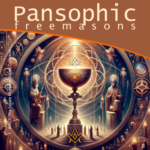 Unveil the secrets of Pansophic Freemasonry, a transformative journey through the ancient mystical traditions. Delve into the sacred realms of Rosicrucianism, Templar wisdom, Kabbalah, Gnosticism, and more. Discover the Graal, the sacred Grail that connects all esoteric paths. Embrace a holistic spiritual quest that reveals the profound mysteries of self and the universe. |
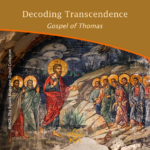 Dive into a spiritual journey where self-awareness is the key to enlightenment. The Gospel of Thomas and Masonic teachings converge on the profound truth that the path to transcendent wisdom lies within us. Embrace a diversified understanding of spirituality, emphasizing introspection as the gateway to a universally respected enlightenment. Explore, understand, transcend. |
 Philosophy the Science of Estimating Values Philosophy is the science of estimating values. The superiority of any state or substance over another is determined by philosophy. By assigning a position of primary importance to what remains when all that is secondary has been removed, philosophy thus becomes the true index of priority or emphasis in the realm of speculative thought. The mission of philosophy a priori is to establish the relation of manifested things to their invisible ultimate cause or nature. |
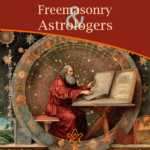 Unlocking the Mysteries: The Surprising Connection Between Freemasonry and Astrologers Revealed! Delve into the intriguing world of Freemasonry and explore its ties to astrological practices. Discover how these two distinct realms intersect, offering a fascinating glimpse into the esoteric interests of some Freemasons. Uncover the hidden links and unravel the enigmatic bond between Freemasonry and astrologers! |
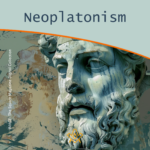 Neoplatonism, a philosophy with profound influence from the 3rd to the 6th century, merges Platonic ideals with Eastern thought, shaping Western and Middle-Eastern philosophy for two millennia. It emphasizes the unity of the individual with the supreme 'One', blending philosophy with theology and impacting major religious and philosophical movements, including Christianity and Islam. |
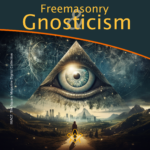 The enigmatic allure of Freemasonry's ancient rituals and Gnosticism's search for hidden knowledge capture the human spirit's endless quest for enlightenment. Between the stonemason's square and the Gnostic's divine spark lies a tantalizing intersection of philosophy, spirituality, and the pursuit of esoteric wisdom. Both traditions beckon with the promise of deeper understanding and moral elevation, inviting those who are drawn to unravel the tapestries of symbols and allegories. Whether through the fellowship of the lodge or the introspective journey of the soul, the paths of Freemasonry and Gnosticism represent a yearning to connect with something greater than ourselves—an impulse as old as time and as compelling as the mysteries they guard. |
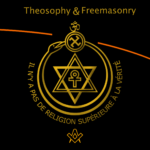 Embark on a journey through time and spirituality with our in-depth exploration of the Theosophical Society's Seal. This ancient emblem, rich with symbols, bridges humanity with the cosmos, echoing through the world's great faiths and diverse cultures. Our paper delves into the six mystical symbols, untangling their profound meanings and tracing their presence in historic art worldwide. Unaffiliated with worldly movements, these symbols open a window to esoteric wisdom. We also probe potential parallels with Freemasonry, seeking threads that might connect these storied organizations. Join us in unveiling the universal language of the spirit encoded within this enigmatic Seal. |
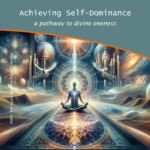 Discover the pathway to divine oneness through the concept of self-dominance. This thought-provoking essay explores the profound connection between self-control, spiritual growth, and achieving unity with the divine essence. With an interdisciplinary approach, it offers practical steps towards expanding consciousness and deepening our understanding of the divine. |
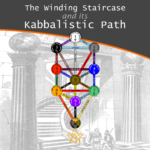 The Winding Staircase and its Kabbalistic Path The Winding Staircase in freemasonry is a renowned symbol of enlightenment. In this article, we explore its connection to Kabbalistic thought and how it mirrors the inner growth of a candidate as he progresses throughout his Masonic journey. From faith and discipline in Binah, to strength and discernment in Geburah, and finally to victory and emotional intuition in Netzach, each step represents a crucial aspect of personal development. Join us as we delve into the esoteric meanings of this powerful symbol. |
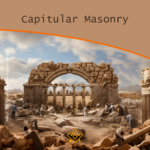 Unravel the mystic origins of Capitular Masonry, a secretive Freemasonry branch. Explore its evolution, symbolic degrees, and the Royal Arch's mysteries. Discover the Keystone's significance in this enlightening journey through Masonic wisdom, culminating in the ethereal Holy Royal Arch. |
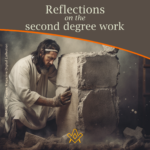 Reflections on the Second Degree Work Bro. Draško Miletić offers his reflections on his Second Degree Work – using metaphor, allegory and symbolism to understand the challenges we face as a Fellow Craft Mason to perfect the rough ashlar. |
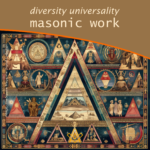 Diversity and Universality of Masonic Work Explore the rich tapestry of Masonic work, a testament to diversity and universality. Uncover its evolution through the 18th century, from the stabilization of Symbolic Freemasonry to the advent of Scottish rite and the birth of Great Continental Rites. Dive into this fascinating journey of Masonic systems, a unique blend of tradition and innovation. Antonio Jorge explores the diversity and universality of Masonic Work |
 Nonsense as a Factor in Soul Growth Although written 100 years ago, this article on retaining humour as a means of self-development and soul growth is as pertinent today as it was then! Let us remember the words of an ancient philosopher who said, when referring to the court jester of a king, “It takes the brightest man in all the land to make the greatest fool.” |
 Freemasonry: The Robe of Blue and Gold Three Fates weave this living garment and man himself is the creator of his fates. The triple thread of thought, action, and desire binds him when he enters into the sacred place or seeks admittance to the Lodge, but later this same cord is woven into the wedding garment whose purified folds shroud the sacred spark of his being. - Manly P Hall |
 By such a prudent and well regulated course of discipline as may best conduce to the preservation of your corporal and metal faculties in the fullest energy, thereby enabling you to exercise those talents wherewith god has blessed you to his glory and the welfare of your fellow creatures. |
 Jacob Ernst's 1870 treatise on the Philosophy of Freemasonry - The theory of Freemasonry is based upon the practice of virtuous principles, inculcating the highest standard of moral excellence. |
 Alchemy, like Freemasonry, has two aspects, material and spiritual; the lower aspect being looked upon by initiates as symbolic of the higher. “Gold” is used as a symbol of perfection and the earlier traces of Alchemy are philosophical. A Lecture read before the Albert Edward Rose Croix Chapter No. 87 in 1949. by Ill. Bro. S. H. Perry 32° |
 The spirit of the Renaissance is long gone and today's globalized and hesitant man, no matter ideology and confession, is the one that is deprived of resoluteness, of decision making, the one whose opinion doesn't matter. Article by Draško Miletić, |
 A Mason's Work in the First Degree Every Mason's experiences are unique - here writer and artist Draško Miletić shares insights from his First Degree Work. |
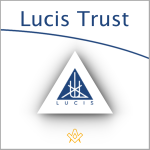 Initiation and the Lucis Trust The approach of the Lucis Trust to initiation may differ slightly to other Western Esoteric systems and Freemasonry, but the foundation of training for the neophyte to build good moral character and act in useful service to humanity is universal. |
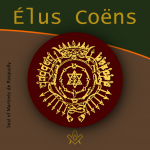 Who were the mysterious 18th century Élus Coëns – a.k.a The Order of Knight-Masons Elect Priests of the Universe – and why did they influence so many other esoteric and para-Masonic Orders? |
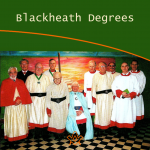 Bro. Chris Hatton gives us his personal reflections on the history of the 'house at Blackheath and the Blackheath Orders', in this wonderful tribute to Andrew Stephenson, a remarkable man and Mason. |
 Book Review - Cagliostro the Unknown Master The book review of the Cagliostro the Unknown Master, by the Editor of the book |
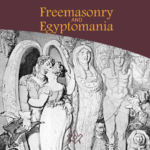 We explore fascinating and somewhat contentious historical interpretations that Freemasonry originated in ancient Egypt. |
 Is Freemasonry esoteric? Yes, no, maybe! |
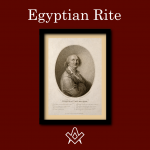 Egyptian Freemasonry, founder Cagliostro was famed throughout eighteenth century Europe for his reputation as a healer and alchemist |
masonic knowledge
to be a better citizen of the world
share the square with two brothers

click image to open email app on mobile device






